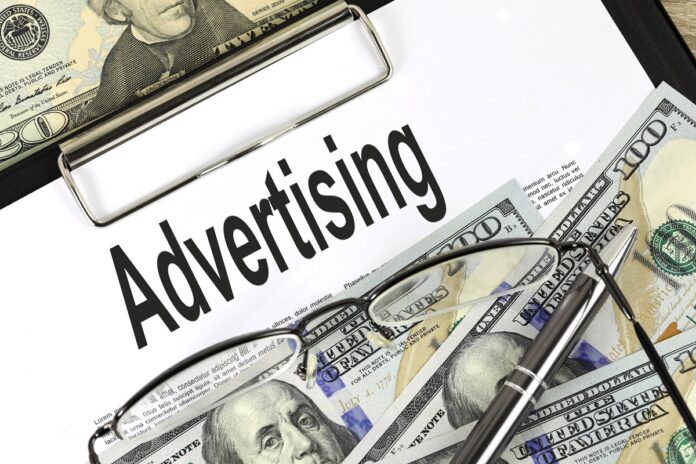Advertising is everywhere. From the billboards on the highway to the ads that pop up on your phone, it’s hard to escape the constant barrage of marketing messages. But does all this advertising actually influence what we buy? The answer, as with most things in life, is complicated.
On one hand, advertising can be incredibly effective at convincing consumers to purchase a product. By creating a need or desire for something, ads can tap into our emotions and influence our decision-making process. However, not all advertising is created equal. Some ads may be more persuasive than others, depending on the product being sold, the target audience, and the messaging being used.
Despite the potential power of advertising, some argue that it may not actually lead to increased consumption. For example, a study published in JSTOR found that increases in advertising by an industry may not necessarily result in increased consumption of that industry’s output. Instead, changes in advertising levels may simply rearrange market shares among firms in that industry. Ultimately, the relationship between advertising and consumption is complex, and it’s difficult to make sweeping generalizations about its overall impact.
How Advertisements Seduce Your Wallet?
The Psychology of Advertising
Advertising works by creating a pattern of associations that elicit an emotional connection or response in the intended audience, ultimately influencing the consumer’s purchasing decisions, often in an unconscious way. Different types of advertising, such as print, TV, and online, use a variety of techniques to influence consumers.
For example, advertisers use the power of suggestion to influence consumers. They use language and images that create an emotional response, such as happiness, fear, or excitement, to encourage consumers to buy their products. They also use repetition to reinforce their message and make it more memorable.
The Power of Persuasion
Advertisers also use the power of persuasion to influence consumers. They use persuasive techniques, such as testimonials, celebrity endorsements, and social proof, to convince consumers to buy their products. They also use scarcity and urgency to create a sense of urgency and encourage consumers to buy now.
For example, advertisers might use language like “limited time offer” or “while supplies last” to create a sense of scarcity and urgency. They might also use social proof by showing how many people have already bought their product or by using celebrity endorsements to create a sense of trust and credibility.
In conclusion, advertisements have a powerful effect on consumer behavior. By using the psychology of advertising and the power of persuasion, advertisers are able to influence consumers and encourage them to buy their products. It is important for consumers to be aware of these techniques and to make informed decisions when making purchasing decisions.
The Influence of Ads on Our Daily Consumption
Ads and Your Morning Coffee
Do you ever wonder why you can’t start your day without a cup of coffee? Well, it’s not just because you’re addicted to caffeine, but also because of the power of advertising. Coffee companies spend millions of dollars on ads that make you believe that their coffee is the best and that you need it to jump-start your day.
From the catchy slogans to the mouth-watering visuals of frothy lattes, they create an image of what your morning coffee should look and taste like. As a result, you’re more likely to buy their coffee and become a loyal customer. So, the next time you sip your morning coffee, remember that it’s not just the caffeine that’s keeping you going, but also the power of advertising.
Ads and Your Fashion Choices
Do you ever find yourself buying clothes that you don’t really need or even like, just because they were on sale or because you saw an ad for them? Well, you’re not alone. Fashion companies spend billions of dollars on ads that make you believe that you need their clothes to look stylish and trendy.
They use beautiful models, catchy music, and stunning visuals to create an image of what you should look like and what you should wear. As a result, you’re more likely to buy their clothes, even if they’re not really your style or don’t fit you well.
So, the next time you’re tempted to buy something just because you saw an ad for it, ask yourself if you really need it and if it fits your personal style. Don’t let the power of advertising control your fashion choices.
In conclusion, advertising has a significant impact on our daily consumption, from the products we buy to the clothes we wear. Companies spend millions of dollars on ads that create an image of what we should look like and what we should consume. It’s up to us to be aware of the influence of advertising and make conscious decisions about our consumption habits.
The Subliminal Messages in Advertising
Advertising is everywhere. From billboards to social media, we are constantly bombarded by messages telling us what to buy, how to look, and who to be. But how much of this messaging is actually sinking in? And are we really in control of our own consumption habits?
Hidden Persuaders in Action
One of the most controversial tactics used in advertising is the use of subliminal messages. These are messages that are hidden within an advertisement, often too quick for the conscious mind to detect. The idea is that these messages will be picked up by the subconscious mind, influencing our behavior without us even realizing it.
But do subliminal messages actually work? The research is mixed. Some studies have found that subliminal messages can influence behavior, while others have found no effect at all. Regardless of the science, the idea of hidden persuaders lurking in our advertisements is enough to make anyone second-guess their next purchase.
Decoding the Subconscious Influence
So, what kind of subliminal messages are we talking about here? It could be anything from a single frame of an image to a whispered message hidden in the background noise of an ad. The goal is to plant an idea in the viewer’s mind without them even realizing it.
One classic example of subliminal messaging is the infamous “Eat Popcorn” experiment conducted by researcher James Vicary in the 1950s. Vicary claimed that by flashing the words “Eat Popcorn” and “Drink Coca-Cola” on a movie screen for just a few milliseconds, he was able to increase sales of popcorn by 58% and Coca-Cola by 18%. However, subsequent studies were unable to replicate Vicary’s results, and he later admitted that the whole thing was a hoax.
Despite the lack of concrete evidence, the idea of subliminal messaging remains a popular topic of discussion in advertising circles. Whether or not these hidden persuaders actually work, the fact that they exist at all is enough to make us question the true extent of our own free will.
The Impact of Digital Advertising on Consumption
Digital advertising has revolutionized the way marketers reach out to consumers. With the increasing use of social media and digital platforms, the impact of advertising on consumption patterns has become more prominent. In this section, we will explore the impact of digital advertising on consumption with a focus on social media ads and the role of influencers in consumption patterns.
Social Media Ads and Impulsive Buying
Social media platforms such as Facebook, Instagram, and Snapchat have become popular advertising channels for marketers. Social media ads are designed to be more engaging and interactive, making it easier for marketers to capture the attention of consumers. However, social media ads can also lead to impulsive buying behavior.
Research shows that social media ads can trigger impulsive buying behavior in consumers. The constant exposure to ads can create a sense of urgency, leading consumers to make impulsive buying decisions. Marketers often use tactics such as limited-time offers and flash sales to create a sense of urgency and encourage consumers to make a purchase.
The Role of Influencers in Consumption Patterns
Influencer marketing has become a popular strategy for marketers looking to promote their products. Influencers are individuals who have a large following on social media platforms and can influence the purchasing decisions of their followers. The use of influencers has become more prevalent in recent years, with many companies partnering with influencers to promote their products.
Influencers can have a significant impact on consumption patterns. Research shows that consumers are more likely to trust the recommendations of influencers than traditional advertising. Influencers can create a sense of authenticity and credibility, making their recommendations more persuasive.
In conclusion, digital advertising has had a significant impact on consumption patterns. Social media ads can trigger impulsive buying behavior, while the use of influencers can influence the purchasing decisions of consumers. As marketers continue to explore new ways to reach out to consumers, the impact of digital advertising on consumption patterns is likely to continue to grow.
The Counter Arguments: When Ads Don’t Work
The Skeptic’s Guide to Advertising
Some people just don’t buy into the hype. They believe that advertising is nothing more than a ploy to get people to buy things they don’t need. These skeptics argue that ads have no real impact on consumption, and that people are smart enough to make their own purchasing decisions.
Of course, this argument is not without merit. After all, people have been buying things for centuries without the help of advertising. And while ads may have some influence on consumer behavior, it’s hard to say just how much.
When Ad-Blockers Save the Day
Another way that ads can fail to influence consumption is when people simply block them out. With the rise of ad-blockers, it’s become easier than ever to avoid ads altogether. This is particularly true for online advertising, which can be easily blocked with a browser extension.
Of course, this is bad news for advertisers, who rely on ads to reach their target audience. But for consumers, it’s a welcome relief. No more annoying pop-ups or banner ads cluttering up their screens.
In conclusion, while advertising may have some impact on consumption, it’s not always a sure thing. Skeptics argue that people are smart enough to make their own decisions, and ad-blockers make it easier than ever to avoid ads altogether. So while ads may be a powerful tool for marketers, they’re not always the most effective way to reach consumers.
Conclusion
Advertising is a powerful tool that can influence consumers’ behavior by creating a desire for products and services. However, the effect of advertising on consumption is not straightforward and can be both positive and negative.
On the one hand, advertising can increase consumption by creating awareness of products and services that consumers may not have known about otherwise. It can also create a sense of urgency and excitement, leading consumers to make impulsive purchases.
On the other hand, advertising can also have negative effects on consumption. It can create unrealistic expectations and desires that are not feasible, leading to disappointment and dissatisfaction. It can also encourage consumers to purchase products that they do not need or cannot afford, leading to financial problems.
In addition, the impact of advertising on consumption can vary depending on the type of product or service being advertised, the target audience, and the timing and frequency of the advertising. For example, advertising for luxury goods may have a different effect than advertising for everyday products.
Overall, while advertising can be a powerful tool for businesses, it is important to consider its potential impact on consumers and society as a whole. By being mindful of the messages they are sending and the impact they are having, businesses can use advertising to drive consumption in a positive and responsible way.







